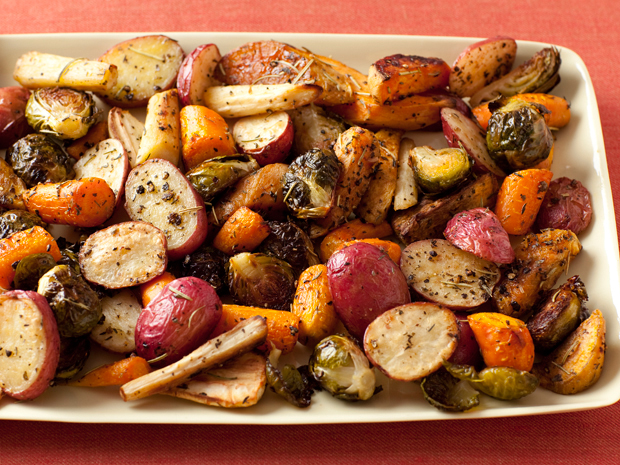
Solid-colored purple carrots contain the most phenolic compounds and therefore may have higher antioxidant capacity in the human body. Anthocyanins may prevent heart disease by acting as anti-inflammatory agents and reducing lipid oxidation.

PARSNIPS VS POTATOES FREE
In particular, chlorogenic acid consumption has been associated with reductions in several chronic diseases.Īnthocyanins in purple and black carrots act as powerful antioxidants to sequester harmful free radicals in the body however, human data are lacking. Total concentration of all identified phenolic acids is greatest in the purple carrots followed by orange, white, and yellow. This is thought to be a benign condition.Įleven different phenolic acids in orange, purple, yellow, and white carrots have been identified. The carotenoids will accumulate in the adipose tissue and the yellow pigmentation of the palms is usually first noticeable. This is due in part to the downregulation of bioconversion of the provitamin A carotenoids to vitamin A as a way to protect the human body from hypervitaminosis A due to high vegetable intake. When carrots or carrot juice are consumed at a high level in the diet, a condition known as hypercarotenemia can occur. Lycopene, which has much higher antioxidant potential than β-carotene, is also associated with a reduced risk of serum lipid oxidation and heart disease. Intake of dietary lycopene, as found in red and some purple carrots, has been associated with a reduced incidence of some forms of cancer. Lutein has also been implemented in preventing some forms of cancers and reducing the risk of atherosclerosis. Specifically, lutein and zeaxanthin are concentrated in the macula of the eye and may be important in preventing macular degeneration. Yellow carrots contain lutein, which has been implicated in improved eye health. Both carotenoids have been reported to have anticancer potential. Carrots have antioxidant capacity because both α-carotene and β-carotene are antioxidants, which are important to trap free radicals and fight against heart disease. Carrots, in particular, have been studied for nutritive benefits and color components and are widely considered a ‘functional food.’ The pigments in carrots serve an important role because they have been associated with reduced risks of atherosclerosis, cancer, and inflammation. Research has focused on the numerous health benefits of phytochemicals, including those that are found in the root vegetables. Root vegetables are also a good source of potassium providing ~ 350 mg in 100 g. While cooking breaks down some nutrients, both carotenoids and anthocyanins of carrot are quite stable with light cooking. Boiling the vegetables does not appreciably change the water content (< 2%) when based on a 100 g serving.

Raw root vegetables are also a good source of water ranging from 80% in parsnips to 88% in carrots and beets. The fiber composition of dried carrot pomace differs from whole carrot and depends on the processing method. The soluble fibers include fermentable hemicellulose and pectin. The insoluble fibers, primarily cellulose and hemicellulose, constitute the greatest portion of the total dietary fiber with small amounts of lignin. Carrot fiber is highly regarded and has become of interest to food processers due to the large quantities of carrot waste, known as pomace, created in the cut-and-peel and juice industries.

Cooking tends to lower the fiber content in beets and parsnips. Root vegetables are a good source of fiber, ranging from 3 g fiber in 100 g of raw carrots and beets to 5 g in 100 g of parsnips. Root vegetables provide energy through their carbohydrate content and are naturally low in fat. Goldman, in Encyclopedia of Food and Health, 2016 Health Effects Table 3.6 shows information on different types of root vegetables. Most root vegetables are tolerant to chilling, and therefore these are well adapted to holding at the lowest possible temperatures after freezing (0☌) and are precooled with cold water (hydrocooling). Curing allows outer skins to dry and harden prior to storage, thus preventing damage due to rough handling, and also rotting. Curing is commonly done immediately after harvest, and consists in exposure at high temperatures combined with high relative humidity for several days. Sweet potatoes need a special curing treatment in order to heal wounds that are often formed during harvest. Some of them, such as carrots and sweet potatoes, may germinate during storage, especially after long storage durations and when maintained at less-than-optimum holding conditions. They are characterized by a low rate of metabolism and therefore their postharvest life is relatively long. Root vegetables include commodities, such as carrot, radish, horseradish, sweet potato, turnip, and beetroot ( Table 3.6). Yahia, in Postharvest Technology of Perishable Horticultural Commodities, 2019 3.3.3 Root Vegetables


 0 kommentar(er)
0 kommentar(er)
